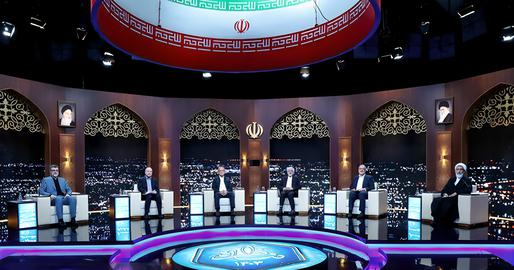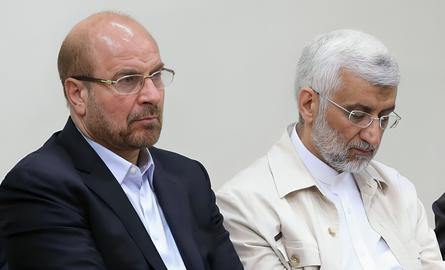Supreme Leader Ali Khamenei has declared that it is "legally and religiously forbidden" for women to remove their head coverings in public and expressed hope that the hijab issue in Iran will be resolved with divine intervention.
Khamenei made the comments on April 4, as a growing number of women have appeared in public without hijab since a young woman, Mahsa Amini, died in police custody in September 2022, sparking nationwide protests demanding fundamental economic, social and political changes. Amini had been arrested for allegedly wearing hijab improperly.
The authorities have repeatedly warned women and girls to respect the Islamic Republic’s dress codes and threatened to punish violators. Many businesses have been shut down due to the failure of owners or managers to observe hijab rules.
Khamenei addressed the requirement for all women in Iran to conceal their hair while in public on numerous occasions since the establishment of the Islamic Republic 34 years ago.
In the early years of his leadership, which started in 1989, Khamenei insisted on how Iranian women had achieved great success while wearing hijab. He has also criticized the compulsory unveiling of women in some countries.
During the 1990s, he focused more on cultural, literary and political issues, though he did warn about the threat of "cultural invasion." He did not regularly address the issue of “bad hijab” until his supporters called for measures to better enforce the Islamic Republic dress codes.
In recent years, Khamenei attacked women activists protesting compulsory hijab, dubbed "the Girls of Revolution Street," and groups within the government who claimed that wearing headscarves should become optional.
Following Amini’s death, Khamenei asserted that the hijab issue was just a pretext for the women-led protester movement to overthrow the government.
In his latest remarks, he declared that "the enemy's spy agencies" are actively seeking to exploit the issue, which he said will “undoubtedly” be resolved.
Khamenei also emphasized the importance of having a plan to deal with women without hijab and called on officials to avoid irregular and unplanned actions.
Emphasizing Women’s Achievements
After becoming the supreme leader of the Islamic Republic, Khamenei highlighted Iranian women’s successes in sports, education and other fields.
In a meeting with doctors in 1989, he stated that hijab does not hinder women's political, scientific and social activities.
He also noted that after the 1979 Islamic Revolution, some Islamic countries "influenced by Western and European culture had turned to Iranian-style hijab."
Chador, the “Best Form of Hijab”
Khamenei's speeches during those years often emphasized the importance of the Iranian chador, a full-length black covering that leaves only the hands, face, and feet exposed, as a symbol of national identity.
During a meeting with the Women's Cultural Council in 1991, he stated that the chador is the “best form of hijab” and that it did not “hinder women's participation in political, social, or cultural activities.”
He also stressed that the hijab issue was “a matter of values and should not be influenced by Western propaganda.”
Despite the emergence of new clothing trends during Akbar Hashemi Rafsanjani’s presidency from 1989 to 1997, Khamenei's supporters maintained that the chador was the most appropriate form of hijab.
In 1995, Khamenei said mandatory hijab had “nothing to do with women's rights and freedom,” adding that “both men and women must observe this restriction in some way.”
Meeting with members of parliament in 1997, he emphasized that hijab “did not limit women's involvement in various fields, including science, culture, politics and the military.”
Increasingly Aggressive about Hijab
After reformist President Mohammad Khatami was inaugurated in 1997, the leader of the Islamic Republic began to issue warnings on the hijab issue.
When asked in 1998 how to deal with women without headscarf, he said that “advertisement” campaign should be launched to target people whose “belief in hijab weakens.”
In the following years, Khamenei spoke about the fight against the headscarf in public spaces in some European countries.
After the 2021 Arab Spring revolts throughout the Middle East, he said that “Western analysts are trying to hide the importance of Islamism in the Tunisian people's uprising.”
The leader of the Islamic Republic seriously addressed the issue of removing hijab after girls took off their headscarves in Tehran’s Revolution Street in 2018, criticizing clerics who spoke against compulsory headscarf.
In February 2019, he stated that criticizing mandatory hijab is “intended to destroy modesty,” and, in August 2018, he emphasized that hijab is a Sharia and legal issue.
In July 2022, Khamenei accused Western adversaries of being behind a movement among Iranian women activists to challenge the government's strict Islamic dress codes.
“Recently, on the pretext of hijab, they have raised the case of women again...Suddenly, the propaganda machine and the...media of the US and Britain and some other places, and their mercenaries and followers, go on the attack,” he said.
After Amini’s Death
After the eruption of nationwide protests in September 2022, the leader of the Islamic Republic described the demonstrators as "enemies" who were not only fighting against mandatory hijab but were seeking the overthrow of the government.
"The fight is not about hijab or improper hijab, it's not about the death of a young girl...Many of the people who don't even fully observe the hijab are ardent supporters of the Islamic Republic of Iran," he stated on October 3.
In an apparent attempt to ease tensions, Khamenei said on January 4 that those who do not fully observe hijab rules should not be accused of being “irreligious and counter-revolutionary.”
However, he insisted that forced hijab remained a government policy and emphasized the need for a plan of action to enforce it.




























comments